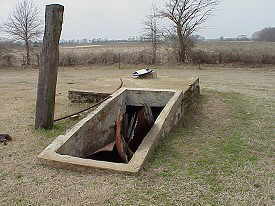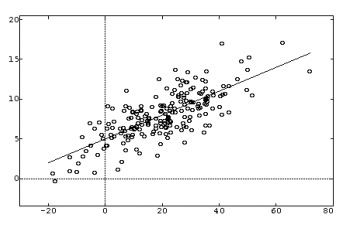- Air Homepage
- Weather Equipment
- Weather Vane Store
Where do you find a weather vane store? What are they for?
Search for more neat stuff.
A century ago, did every town have a weather vane store? Probably the blacksmith also sold weather vanes.
In dust bowl memories, one of these things is usually displayed prominently. Many of us have pleasant memories of silhouettes of roosters, moose, pigs, dogs, cats, and airplanes.
Do you remember what weather vanes were for?
Measuring the motion of air
Yeah, that's what wind is. It has nothing to do with hot air coming from Washington
What causes wind and how do we measure it? For forecasting, wind is measured at a height of 10 metres, about 33 feet. Wind directions are recorded as the directions from which the wind blows. Thus a north wind, for example, typically means colder weather. There's a speed and a direction to air flow reports.
Weather forecasts from Environment and Climate Change Canada and other countries rely heavily on wind speed and direction data. Surface weather analysis is based on this. Can you tell me what the opposite of windy is? Calm.
What's the opposite of steady wind? Gusty. A gust is a change in wind speed, a constant fluctuation. Squalls are stronger bursts that last longer than gusts.
Sailors and pilots need wind vector information. Since they now use government weather services, they probably don't need a weather vane store. Maybe you don't need a weather vane either, but they're cool.
A weather vane storehouse of information.
Have you heard of the Beaufort scale? The two-hundred-year-old system uses subjective and objective criteria to determine wind speeds, but it can be translated into specific speeds like this:
If it's ZERO, it's calm. There's basically no speed. Autumn blaze maple trees and leaves remain still; smoke pictures show it rising straight up; the sea is calm and level.
On the Beaufort Wind Scale, ONE is light air. It's 1 to 3 mph (1 to 5 km/h). The leaves don't move; the smoke drifts slowly; the motion of the wind is shown by the smoke, but not by the vane, and the smooth sea is lightly rippled. A weather vane store wouldn't be necessary if ZERO and ONE were the only winds.
There's a slight breeze at TWO. The speed is 4 to 7 mph (6 to 11 km/h). Leaves rustle; flags wave; vanes show wind direction; water surfaces have small waves. It's normal for wind chimes to ring lightly.
THREE's a gentle breeze. The speed is 8 to 11 mph (12 to 19 km/h). There are leaves and twigs constantly moving; small flags extended; long unbroken waves.
FOUR represents a moderate breeze. The speed is 12 to 18 mph (20 to 29 km/h). Branches move; flags flap; waves with whitecaps. Wind mills and wind power generators should be able to run on this amount of energy.
FIVE is a fresh breeze. Between 19 and 24 mph (30 and 38 km/h). If it's cold, body heat dissipates quickly. Trees sway; flags flap and ripple; moderate waves with whitecaps.
By SIX, we mean a strong breeze. Large branches sway, umbrellas are hard to use, flags and clothing might beat and pop and waves have regular whitecaps.
SEVEN means a moderate gale. Between 32 and 38 mph (51 and 61 km/h). The sea heaps up, white foam streaks; trees sway; big waves. It's better to close storm windows; it's hard to walk:
EIGHT's a fresh gale. 39-46 mph (62-74 km/h). Keep your clothes on. A moderately high sea with blowing foam; twigs break off trees.
NINE means a strong gale. 47-54 mph (75-89 km/h). Public seeking insurance liability for wind damage; branches break off trees; tiles blow off roofs.
TEN is a whole gale. Between 55 and 64 mph (90 and 103 km/h). Several trees blown down; damage to buildings and storm doors; high churning white seas and exceptionally high waves hiding ships. It's likely that this wind will keep the weather vane store in business.
ELEVEN means gale storm. 65-74 mph (104-119 km/h). Trees and buildings were damaged; waves were mountainous. Attempts to mitigate wind damage. White foam covering the sea.
A hurricane force is designated as TWELVE. With speeds over 75 mph (120 km/h), this is the ultimate target of storm chasing. Structural damage and rain forest destruction on land and storm waves at sea.
There are different classifications for hurricanes and tornadoes. In these conditions, people seek storm shelters. Check out Saffir-Simpson and Fujita Scale.
A wind shift is when the direction changes by at least 45° between records.
Measuring the wind force.
What's the best way to measure wind speed? Anemometers and wind-force gauges rotate at a speed that can be directly translated into wind speed. Wind energy is usually captured by cups or blades on a wheel.
According to Newton's physics, that energy would manifest itself elsewhere. This is the dial, display, or recording.
In any case, you can also find anemometers at the weather vane store; often the wind speed and direction sensors are built together. Some are on pivots like swivel bar stools, so they always face the wind. Wind direction is indicated by the rotating part and its indicator.
#27
Search this site for more information now.
Go back from Weather Vane Store to the
Weather Equipment web page.
Are you interested in measuring the wind with a weather vane?
A store that sells weather vanes. You might want something that can detect moving air.
Do you have concerns about air pollution in your area??
Perhaps modelling air pollution will provide the answers to your question.
That is what I do on a full-time basis. Find out if it is necessary for your project.
Have your Say...
on the StuffintheAir facebook page
Other topics listed in these guides:
The Stuff-in-the-Air Site Map
And,
Thank you to my research and writing assistants, ChatGPT and WordTune, as well as Wombo and others for the images.
GPT-4, OpenAI's large-scale language generation model (and others provided by Google and Meta), helped generate this text. As soon as draft language is generated, the author reviews, edits, and revises it to their own liking and is responsible for the content.





New! Comments
Do you like what you see here? Please let us know in the box below.